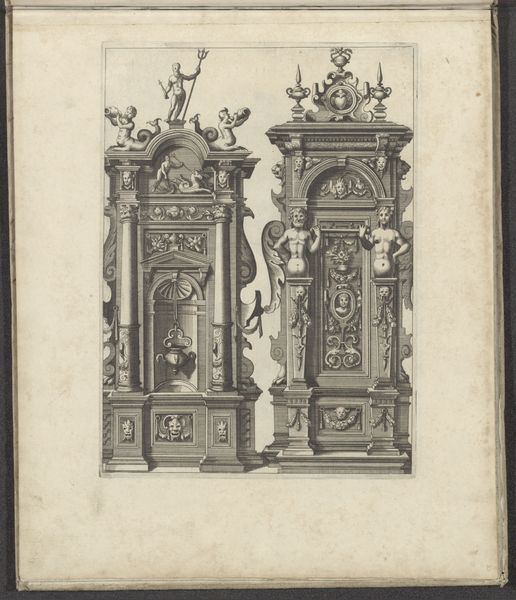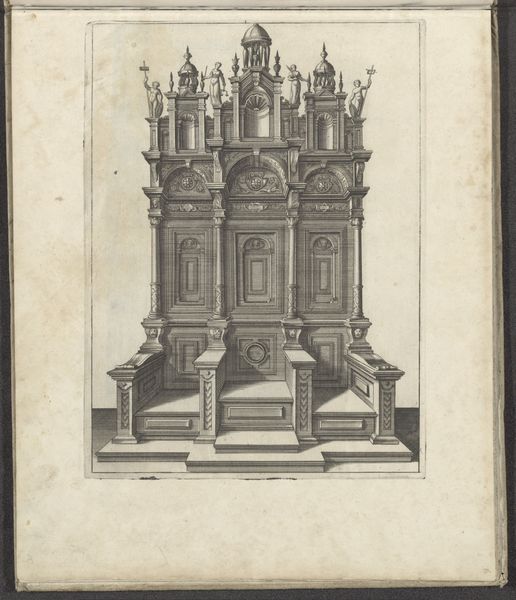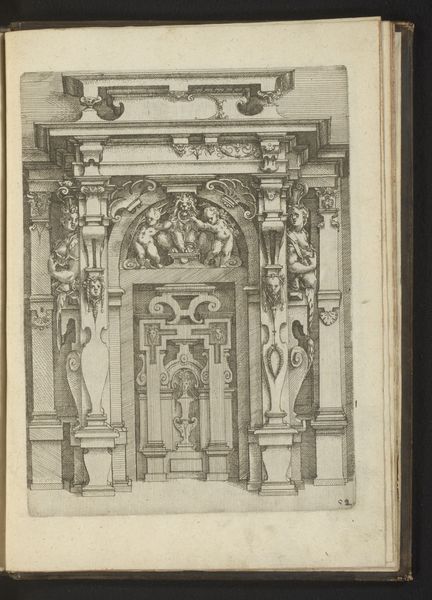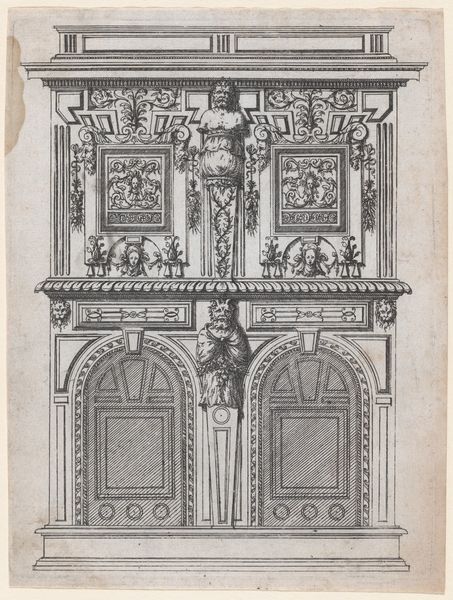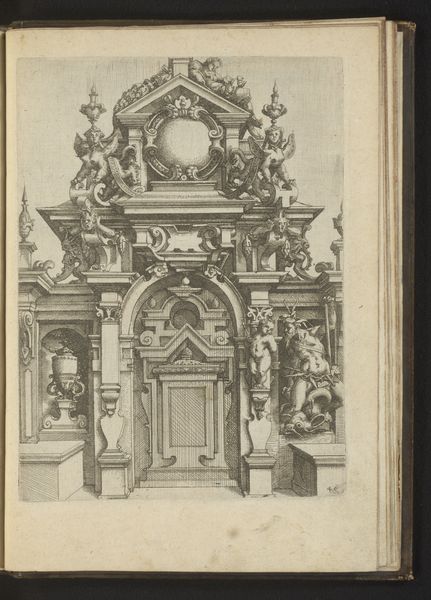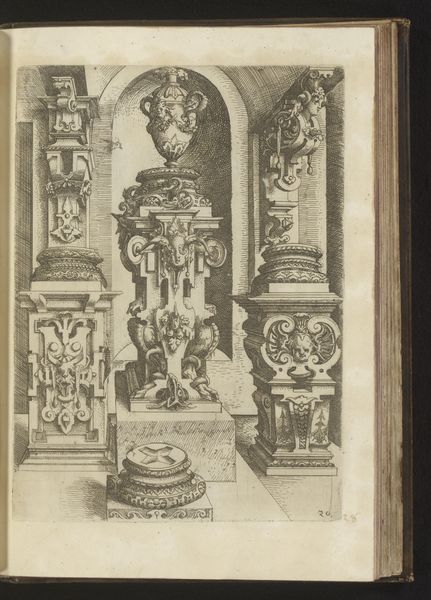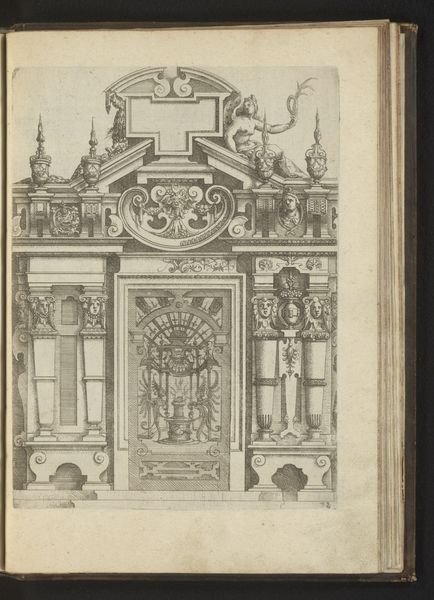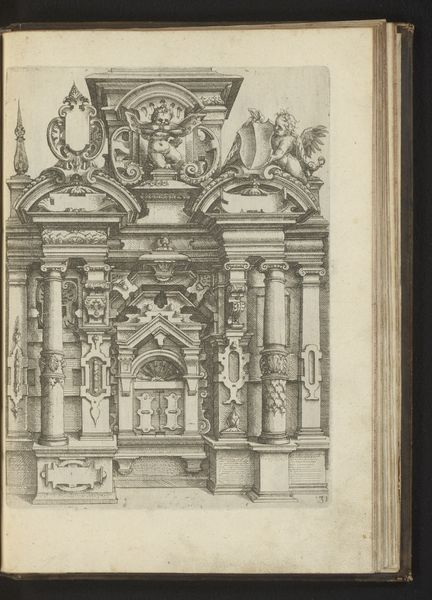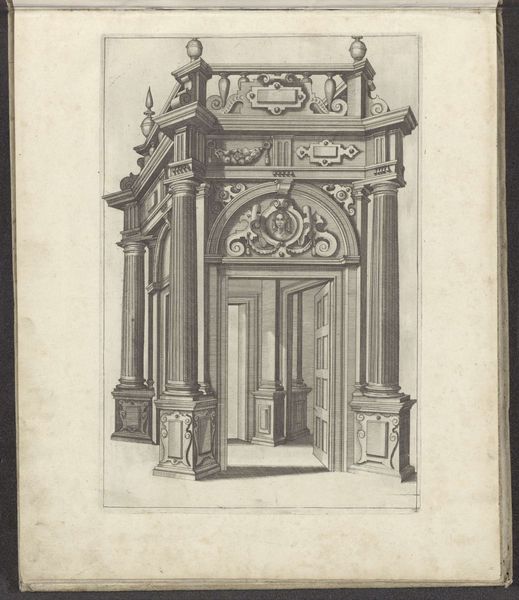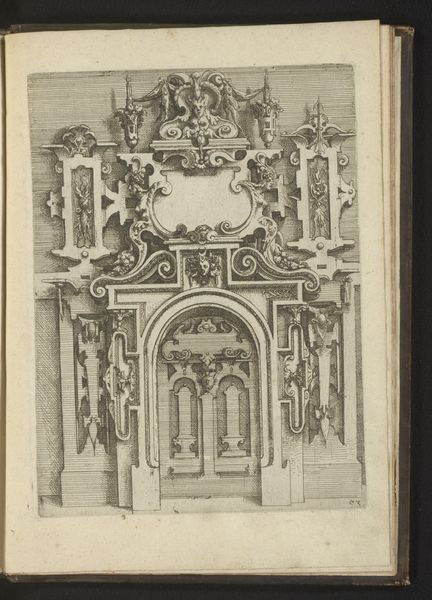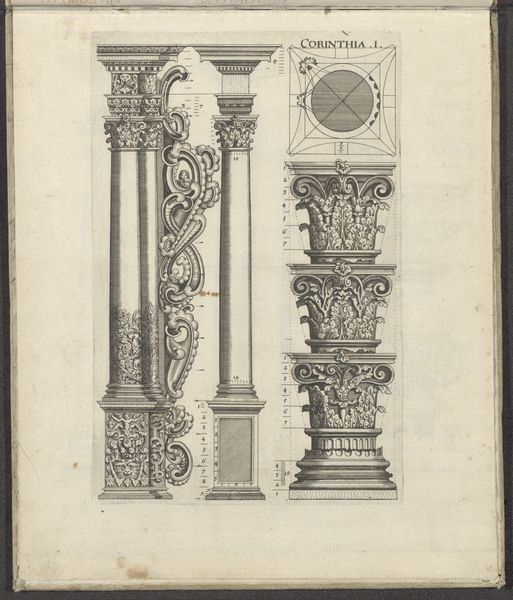
drawing, print, paper, engraving, architecture
#
drawing
#
aged paper
#
toned paper
#
baroque
#
mechanical pen drawing
# print
#
furniture
#
sketch book
#
paper
#
form
#
11_renaissance
#
personal sketchbook
#
pen-ink sketch
#
pen and pencil
#
line
#
pen work
#
sketchbook drawing
#
sketchbook art
#
engraving
#
architecture
Dimensions: height 295 mm, width 201 mm
Copyright: Rijks Museum: Open Domain
Editor: Here we have two wall panel designs with washbasins, dating back to 1658. They're rendered as engravings on paper, showcasing intricate line work. They feel very formal and architectural to me. What’s your interpretation of these designs? Curator: From a materialist perspective, let's consider the context of production. Engravings like these weren't merely aesthetic exercises. The paper itself, the ink, the skilled labor required to create such precise lines - it all points to a very specific set of economic and social circumstances. Who would have commissioned such designs, and for what purpose? Were these for a wealthy patron's residence? Editor: That's interesting, I hadn't thought about the economics behind it. I was more focused on the details within the image. So, understanding the means of production gives us more insight? Curator: Absolutely. These basins aren't just objects of utility, they’re statements of wealth and status. The choice of materials, the ornamentation, it speaks to a culture that valued refinement and display. And who had access to the necessary materials, or even clean water? We should be considering the socio-economic dynamics at play. What narratives are present in the iconography? Editor: It makes you wonder about hygiene, doesn't it? And how this level of design likely meant a life of luxury, inaccessible to most. Curator: Exactly. The materiality of the drawing, the implied materiality of the washbasins, all leads us to questions about labor, class, and consumption in the Baroque period. Considering what daily life would have been like really contextualizes what this artwork may have represented in its time. Editor: I guess focusing on the process and the materials provides a completely different entry point into understanding art than simply looking at it. I learned a lot. Curator: Indeed. Examining the physical aspects of art and its production reveals hidden stories about society and power.
Comments
No comments
Be the first to comment and join the conversation on the ultimate creative platform.
